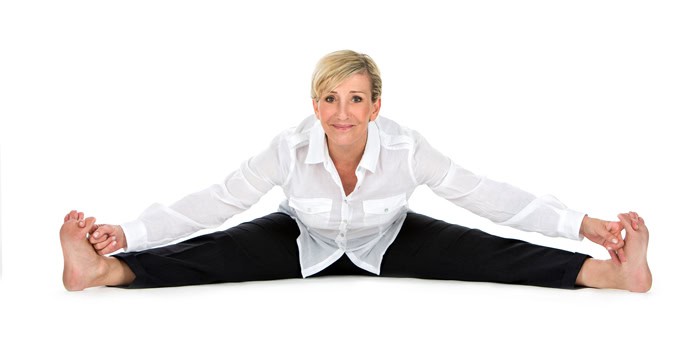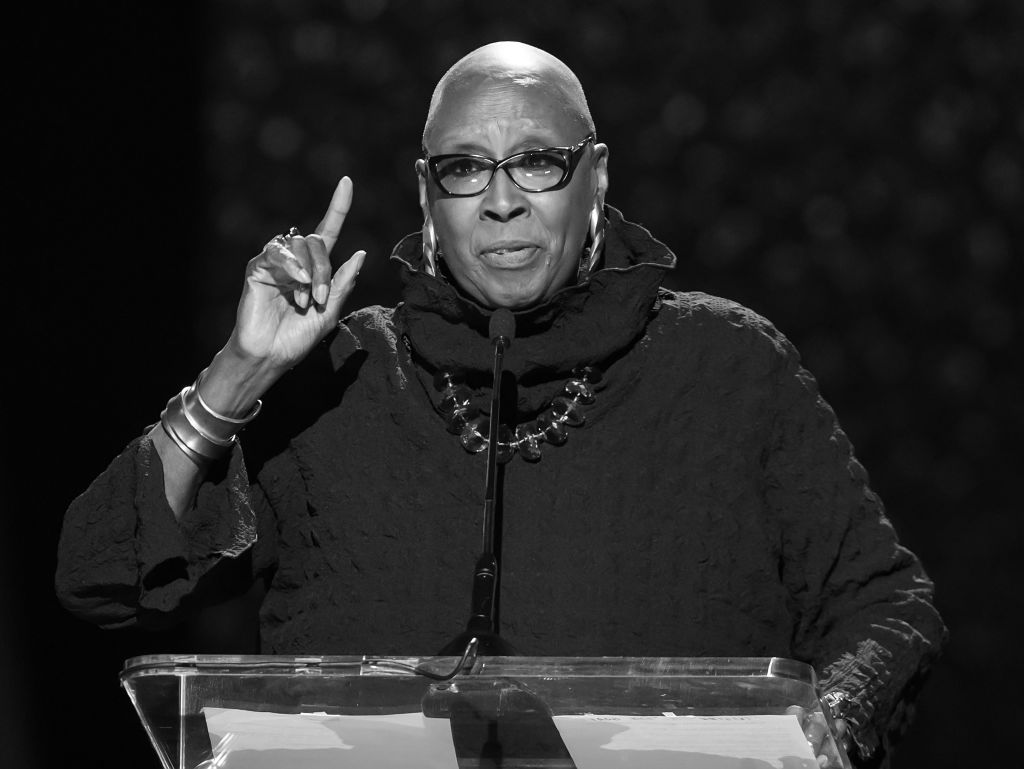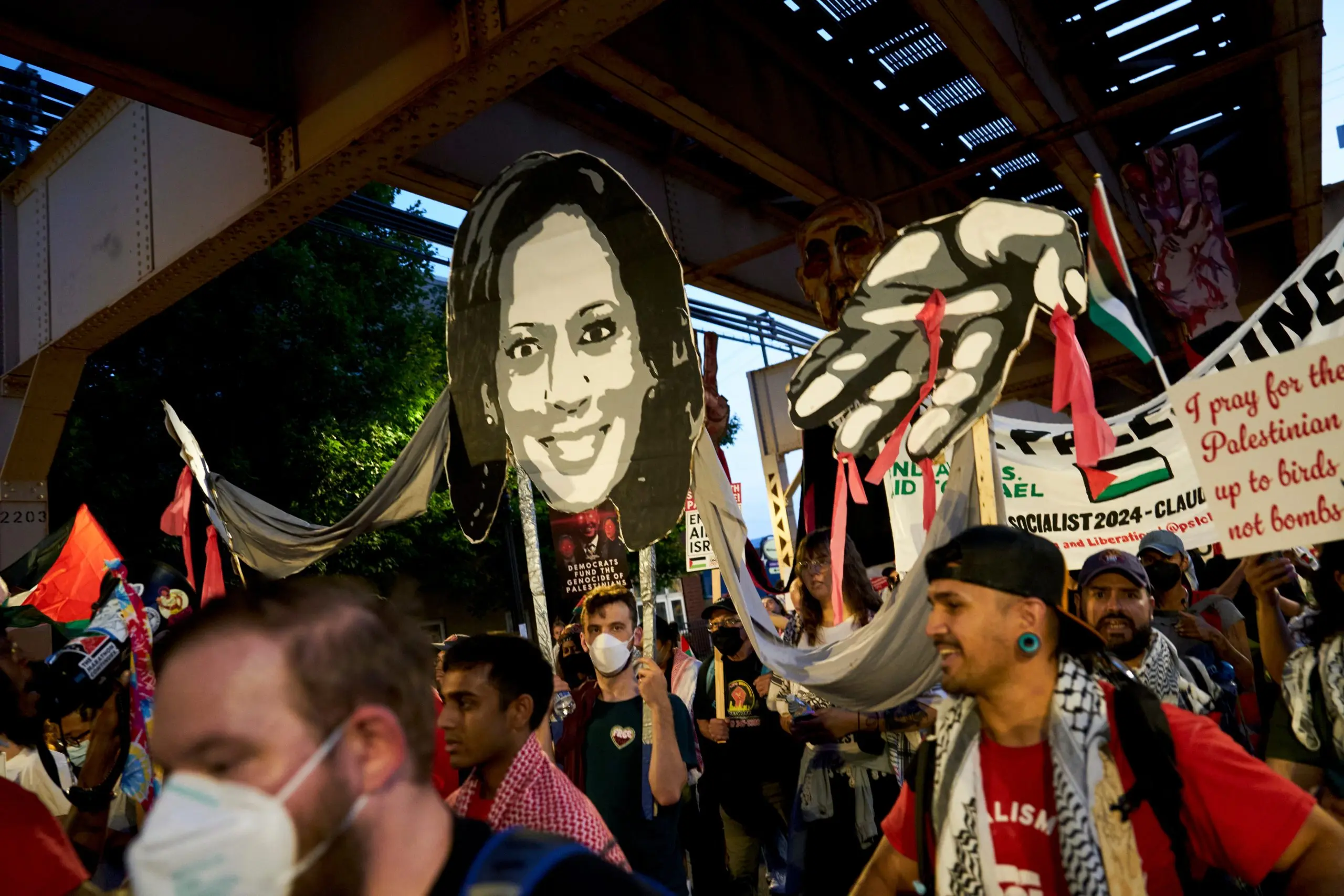The question at the heart of America’s abortion debate is the most elemental — and the most complicated.
It was the perfect ornament for Christmas, she thought — the photograph from the doctor of those little circles, those early cells dividing.
Tina Mody followed every moment when she became pregnant two years ago. The I.V.F. process meant she knew exactly when the egg met the sperm, and when the cells implanted in her uterus. She tracked the morphology of the embryo, its size and shape, thrilled when all looked perfect. She started a nursery, and listened for when she would hear the first sound of a heartbeat.
This is my daughter, she thought. She named her Maya.
On her way to her 16-week pregnancy appointment, she started bleeding. She lost her beloved Maya in the emergency room. Then she had to have a surgical evacuation procedure to remove the placenta before she bled out.
“I can’t tell you exactly when I pinpoint the moment that I think Maya is a person,” said Dr. Mody, a pharmacist. “Because to me and my wife, we think so much of her as the hopes and the dreams that we want in this child.”
“To us, she is alive. She was alive,” she said.
The question of life and when it begins seems so much bigger than the fights she hears about it now in abortion politics, she said. Dr. Mody and her wife started a foundation, Maya’s Wings, to work to eliminate preventable pregnancy loss and improve health outcomes for mothers and babies. She also believes that individuals “have the right to choose, in discussion with their provider” whether or not to have an abortion.
“It really is a very personal decision on how we perceive life to begin. And that is really the crux of this debate we are having,” she said. “It is not black and white.”
America’s fight over abortion has long circled a question, one that is broad and without consensus:
When does life begin?

In the months since the Supreme Court overturned Roe v. Wade, it has become unavoidable, as activists and politicians try to squeeze concrete answers from an eternal question of human existence.
Lawmakers and judges from Arizona to South Carolina have been reviewing exactly which week of development during pregnancy the procedure should be allowed. Some states draw the line at conception, or six weeks or 15 or around 40. Many others point to viability, the time when a fetus can survive outside the uterus. The implication is that after the determined time, the developing embryo or fetus is a human being with rights worth protecting.
Over the summer, when lawmakers in Indiana fought over passing a law banning most all abortions from conception, Republicans argued at length that a fertilized egg was a human life, at times citing their Christian principles — that “human life begins at conception” and “God our creator says you shall not murder.” A Democrat pointed to another answer found in Title 35-31.5-2-160 of the Indiana code: “‘Human being’ means an individual who has been born and is alive.” A disagreement over abortion policy became a fight over what it means to be human, the tension between conception and birth, church and state.
Yet the question goes far beyond politics, law and science into the heart of human experience. The creation of children, the essence of the human person and the survival of the species can pull at the most sacred parts of our lives, wrapping together love and death, hope and grief. Amid the societal upheaval, women continue to become pregnant, have miscarriages and give birth. They feel first kicks and see detailed sonograms. A pregnant woman uses her own nutrients and blood to grow offspring, breathing for it until birth. The growing fetus transforms the woman’s body, and can even threaten her life.
Public opinion reflects the range and complexity of belief. Most Americans support the right to an abortion, but within limits, and they disagree on what exactly those limits should be. But almost uniformly across gender, politics and religion, they believe that how long a woman has been pregnant should matter in determining whether the procedure is legal. More than half of American adults say the statement “human life begins at conception, so a fetus is a person with rights” describes their views at least somewhat well, according to the Pew Research Center.
How do you think about the question of when life begins?
This question goes far beyond politics, law and science into the heart of human experience. Every culture and time have determined their own answers, and now we want to hear from you.
The question of when life begins has been so politicized it can be hard to thoughtfully engage. Even the question can be confusingly broad in what it is asking. In biological terms, when is an organism an organism? Or philosophically, what makes a human a person? And spiritually, what is the relationship between the body and the soul?
Amander Clark, president-elect of the International Society for Stem Cell Research, has examined the question for years as a stem cell biologist. Recently she asked her 5-year-old when life begins, and smiled at his reply: “That’s a chicken and egg question, Mom!”
The question is a very complicated one, she said.
“From the biologist point of view, I’d need to say life of a mammalian organism begins at fertilization,” she said. “But if the question is, when is a human a human being, to me that is very different.”
Even Pope Francis, leader of one of the most prominent forces opposing abortion, acknowledges the complexity.
“In any book of embryology, it is said that shortly before one month after conception the organs and the DNA are already delineated in the tiny fetus, before the mother even becomes aware,” he said in a recent interview with the magazine America. “Therefore, there is a living human being. I do not say a person, because this is debated, but a living human being.”

For generations, the mystery of human life has been wrestled by philosophers and scientists, felt by mothers and midwives. Every culture and time has determined its own answers.
Ancient Chinese medicine spoke of two essences joining together, of mother and father, blood and semen, to generate a child who is intertwined with the mother until birth. Ancient Egypt gave the power to create new human life almost entirely to men. Jewish communities have long pointed to life beginning with a baby’s first breath, recalling the Genesis story of God breathing the breath of life, or the soul, into the first man.
The Western perspective has been largely shaped by Christianity, a religion that was quite literally born from a pregnant woman who, as the biblical story goes, carried a divine child when an angel told her that was God’s plan. From the faith’s earliest days, many theologians have seen the soul as something God creates and puts into a body in utero, though they have differed on when, exactly, this “ensoulment” occurs.
In the 13th century, Thomas Aquinas, following the philosophers Augustine and Aristotle, posed that the “rational soul” came into being not immediately but at around 40 days for a male and about twice that for a female, the time he thought “quickening” happened. Quickening, the stage in pregnancy in which a woman starts to feel movement in her uterus, actually happens around four or five months, regardless of sex. In medieval Christian Europe, an ensoulment that was not immediate helped to address anxiety around pregnancy loss, given the prevalence of miscarriages and stillbirths, and Catholic teaching that only baptized souls could be saved. The Catholic Church generally held this view of a later fetal ensoulment for the next 600 years.

The scientific revolution, from Charles Darwin’s theory of evolution to reproductive science, disrupted centuries of thought on human life.
Nick Hopwood, a professor at the University of Cambridge, has spent years researching the history of reproduction. The question of when life begins may be inherited from the idea of ensoulment, and the idea that you can pinpoint a specific moment when that happens, but by the 20th century many biologists rejected the question as “not a good question,” he said.
“The egg is alive, the sperm is alive, the cells from which they develop are alive, it is a continuum,” he said. “There might be slightly more acceptance of the question, ‘When does a life begin?’ And then different biologists might point to different stages.”
Scientific consensus around conception emerged in the 1870s, when a German scientist watched through a microscope as the nuclei of sea urchin sperm and egg fused. It was during this period of scientific advancement and social conflict that Pope Pius IX shifted ensoulment to conception.

Popular discourse today often references “the moment” of conception, but fertilization is a complex biological process that can occur about two weeks after a woman has a period, if female and male sex cells meet. A woman’s ovary releases an egg, which moves down the fallopian tube, a duct whose cells interact with incoming male sperm cells and change a sperm cell’s composition so it can fuse with the egg.
The cell begins to divide, and after several days it has become a ball of about 100 cells, of which only a small fraction give rise to the human embryo. The rest will create things like the placenta, a new organ that a woman’s body makes with an umbilical cord to share her nutrients and oxygen with the embryo.
For about 14 days after conception, this small but growing group of cells can potentially divide into separate entities, leading to twins or triplets. That possibility largely ends at implantation, when biochemical interactions allow the cells to attach to the wall of the uterus. Then, a specialized process called gastrulation begins, when the embryo cells begin to differentiate into systems to organize the body.
The discovery of DNA reshaped ideas about what made a person an individual. Fertilization, when a human gets its genome, has become a modern kind of ensoulment, said Scott Gilbert, professor emeritus of biology at Swarthmore College, a co-author of a prominent textbook on developmental biology.
“It is a creation story myth, it is an origin story,” he said. “The female myth, the myth of birth, is replaced by the male myth of fertilization.”
The biological story of fertilization has too often been simplified, inaccurately, into a hero tale of a strong sperm swimming to penetrate an egg, he said. There is no violent penetration, but rather the two cells’ membranes dissolve — they sort of spoon, he said — to share genetic material to create a one-cell entity called a zygote. In the process of natural development, scientists estimate that up to or around two-thirds of zygotes do not result in a live birth, though the number is difficult to determine. Many fertilized eggs do not implant, and even after that some pregnancies naturally fail.

Development is a progressive continuum as cells realize unique purposes, systems interact and body parts grow. Different scientific fields focus on different stages to evaluate pivotal moments, whether that is fertilization, embryonic cell differentiation, or cardiac or brain activity. The entire process takes about 40 weeks, until the next major developmental moment: birth. Key phases for heart development occur in the first few weeks, along the way and at the end. At birth, the baby’s first breath changes its cardiac anatomy.
For years in the United States, a focal point has been 23 or 24 weeks of development, called viability, when the fetus may be able to survive outside the uterus. Around the time of the Roe decision in the 1970s, available technology meant that viability was around 28 weeks.
Advances over the past half-century have offered far more understanding of fetal development than humans have ever had. Babies can now be born through assisted reproductive technologies. 4D ultrasounds show lifelike images inside the uterus. Fetal surgeons can treat spina bifida at 24 weeks after conception. In 2020, a baby boy was born in Alabama at 21 weeks and one day and lived, setting a Guinness world record.
Dr. Brendan B. Mitchell is an obstetrician-gynecologist and the longtime medical director for Advice and Aid Pregnancy Centers in Overland Park, Kan., which opposes abortion and provides some support for pregnant women.
He struggles with what he feels is inconsistency in how society values premature babies versus developing fetuses. Doctors work hard to save babies born at 23 or 24 weeks, and people spend millions of dollars to help patients born prematurely, he said, but in some places it is legal to terminate a pregnancy at that time.
“That point of viability is getting constantly pushed back,” he said. “What defines that person as a person or a life — is it what their parents think?”
While American society has worked over decades to come to a consensus on when death occurs, there has not been similar cultural agreement on when life begins, he said.

In biology, scientists research how humans develop not as persons, but into independent organisms. There is less attention to what else is happening during that same 40-week period: the state of pregnancy.
Pregnancy is a woman “making a new organism with her body,” said Elselijn Kingma, a professor at the King’s College London who specializes in pregnancy through both science and philosophy.
It is a unique state where one organism grows, as part of itself, a fetus which will eventually detach and become its own, independent organism, she said. It is a state “where the other person can only exist by grace of the constant provision and nourishment of another,” she said.
It does not follow that a fetus is not an organism before birth — sometimes organisms can be part of other organisms — or that a pregnant human should be allowed to treat the fetus as any other body part, Dr. Kingma said. Body parts are not all the same: Hair is different from kidneys, and cutting hair is different from cutting kidneys, she said, and “obviously the fetus is quite an unusual body part.”
“That is just not a relationship we really have space for, like our law and our morality, they all assume that we have separate bodies,” she said. “That’s the really tricky question: What does morality demand? And then, what can the law enforce, and what can society demand, in that unique state of intertwinement?”
The question of when human life begins is a difficult one, but Dr. Kingma believes society should turn its attention to what she feels is the larger, even harder question: “What kind of entitlement on the body of another does a human have?”
The search for answers pushes past science. It is tied to a society’s values, a person’s sense of self and a cultural understanding of what it means to be human. Spiritual thinkers and philosophers, who have long explored these realms, say it requires social choice, and an interrogation of our ethics.
In the United States, there has long been a unique focus on the individual, and individual freedoms, often instead of the community or ecosystem. For the question of a new human life, that has led to an either/or priority on the pregnant woman or the developing baby.
“We think we are having a debate in the United States about when life begins, but we are not,” said Agustín Fuentes, an anthropologist at Princeton University. “We are having a debate about when society is going to decide that the person counts. And not only when the person counts, but which person counts more.”

As someone who studies biological societies and human evolution, he grows frustrated at the individual focus, which he sees as atypical for the human species.
“We should be asking questions about our community. What is best not for an individual but for a society, for mothers, for families, for communities,” he said.
If everyone agrees the ultimate goal is to maximize health, a different set of questions arises, he said.
“How do we create and foster the healthiest possible outcomes for individuals and for communities, it can’t just be either/or,” he said.
Many Indigenous communities consider the idea of “person” as what it means to be born a member of a people, said Andrea Sullivan-Clarke, a philosophy professor and member of the Wind Clan of the Muscogee Nation of Oklahoma.
With relationship at the center, the focus becomes community, and shifts to how to contribute to the people and treat children and women, she said.
Even the act of considering future generations means that in some way, they already exist, she said.
“We need to look at the obligations that we have to others, and to nature,” she said. “I have obligations to the mountains and the trees and the rivers and ancestors and future generations. That is going to inform how I view the world and what I need to do in order to live in it in the right way.”
Making decisions about how to live, and live together as a society, can be extraordinarily difficult.
But hardship is something to prepare for, not run away from, said the Rev. Cristina Moon, a priest at a Rinzai Zen temple in Honolulu.
She teaches meditation followed by martial arts, as a way to train for life’s adversities. Families and parents face myriad complex circumstances that don’t fit neatly into dualistic ethical frameworks, well beyond abortion, she said. What matters is developing courage and spiritual strength, she said — and compassion.
“We can’t know all of the things that somebody is having to take into account to make a really hard decision,” she said.
“When does the responsibility for a life begin and end?”




















Discussion about this post